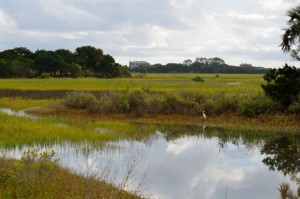By Taylor Anderson
On June 17, 2015, the Fourth Circuit issued its published opinion regarding the civil case S.C. Coastal Conservation League v. United States Army Corps of Eng’rs. The appellant, the South Carolina Costal Conservation League (“League”), appealed the district court’s dismissal of its various federal law claims against various appellees, including the Army Corps of Engineers (“Corps”), the Environmental Protections Agency (“EPA”), South Coast Mitigation Group (“South Coast”), and agency officials. The League also appealed the district court’s denial of its motion for leave to amend its complaint. The Fourth Circuit affirmed the judgment of the district court, holding that the League did not identify any concrete injury in fact.
The League Alleges Several Environmental Counts
South Coast owned a 700-acre tract of private property in South Carolina. The entire tract was adjacent to two tributaries of the Back River fork of the Savannah River and the Back River’s marsh system. This case involved a dispute over the use of 485 acres of freshwater wetlands on this tract (“Embanked Tract”) which is separated from the Back River and its marsh system by man-made earthen embankments. These embankments include a variety of water control structures which can be opened in order to directly connect the Embanked Tract with the Back River and its tidal marsh system. When the water control structures are open, brackish water from the Back River and its tidal marsh system enters the Embanked Tract.
This litigation stemmed from South Coast’s desire to connect the Embanked Tract with the Back River fork of the Savannah River and its tidal marsh system to allow the entire 700-acre tract it owns to become a functioning tidal marsh integrated with the Savannah River. South Coast desired to remove all of the material used to create the earthen embankments currently separating the Embanked Tract from the Savannah River and to deposit such material in adjacent ditches. South Coast applied for a permit to carry out this project. Together, the Corps and the EPA approved South Coast’s permit, allowing South Coast to place the excavated material from the embankments into adjacent ditches.
On August 16, 2013, the League filed its First Amended Complaint against the Corps, the EPA, and South Coast. This complaint contained six counts, alleging violations of different environmental laws. The League filed this complaint because it believed that unless the approved project was stopped, saline water from the Savannah River would intrude onto the Embanked Tract and convert the freshwater wetlands thereon to saltwater wetlands, thus impairing its members’ use and enjoyment of the Lower Savannah River ecosystem.
Between January 27, 2014 and February 14, 2014, South Coast conducted tests regarding the salinity of the water inside the impoundments on the Embanked Tract and the salinity of the water immediately outside the Embanked Tract in the Back River and its marshland system. The test revealed the average salinity of water inside the Embanked Tract was 3.4 parts per thousand and the average salinity of the water immediately outside the Embanked Tract was 2.8 parts per thousand.
On March 14, 2014, the League sought leave to amend its First Amended Complaint to include a claim that the Corps failed to comply with the cumulative impact analysis required by the National Environmental Policy Act (“NEPA”). South Coast moved to dismiss the entire action as moot, arguing that the League’s primary feared harm (i.e., the conversion of freshwater wetlands to saltwater wetlands) had already occurred. The district court agreed with South Coast’s argument, denied the League’s motion for leave to amend, and dismissed the entire case on July 11, 2014. The League filed a timely appeal.
The Fourth Circuit Holds the Claim Moot
The Fourth Circuit first noted that under the United States Constitution, article III, § 2, federal courts are limited to resolving cases and controversies where the plaintiff possesses standing to challenge the defendant’s alleged misconduct. To satisfy Article III’s standing requirement, the plaintiff must have suffered or be imminently threatened with a concrete and particularized injury in fact that is fairly traceable to the challenged action of the defendant and likely to be redressed by a favorable judicial decision. When a case or controversy ceases to exist, the litigation is moot, and the court’s subject matter jurisdiction ceases to exist also.
In echoing the district court, the Fourth Circuit reasoned that because the water inside the Embanked Tract was more saline than the water the League sought to prevent from entering the Embanked Tract, the court could not provide meaningful relief with respect to the League’s feared harm of the wetlands on the Embanked Tract turning from freshwater wetlands to saltwater wetlands. Allowing South Coast to level the embankments and place the fill dirt in the adjacent ditches would not make the water within the Embanked Tract any more saline than it currently is.
The Fourth Circuit Affirms the Denial of the Motion for Leave to Amend
The Fourth Circuit disposed of the League’s challenge as to the district court’s denial of its Motion for Leave to Amend its First Amended Complaint. The Fourth Circuit held that because the district court’s mootness ruling was sound and the League offered no additional basis for standing, the district court did not abuse its discretion in denying, on the ground of futility, the League’s motion seeking leave to amend its First Amended Complaint.
Judgment Affirmed
Because the League’s did not allege a concrete and particularized injury in fact, it did not have standing to bring an action. The Fourth Circuit affirmed the district court’s ruling that because the League did not have standing to bring an action, its claims were moot.






